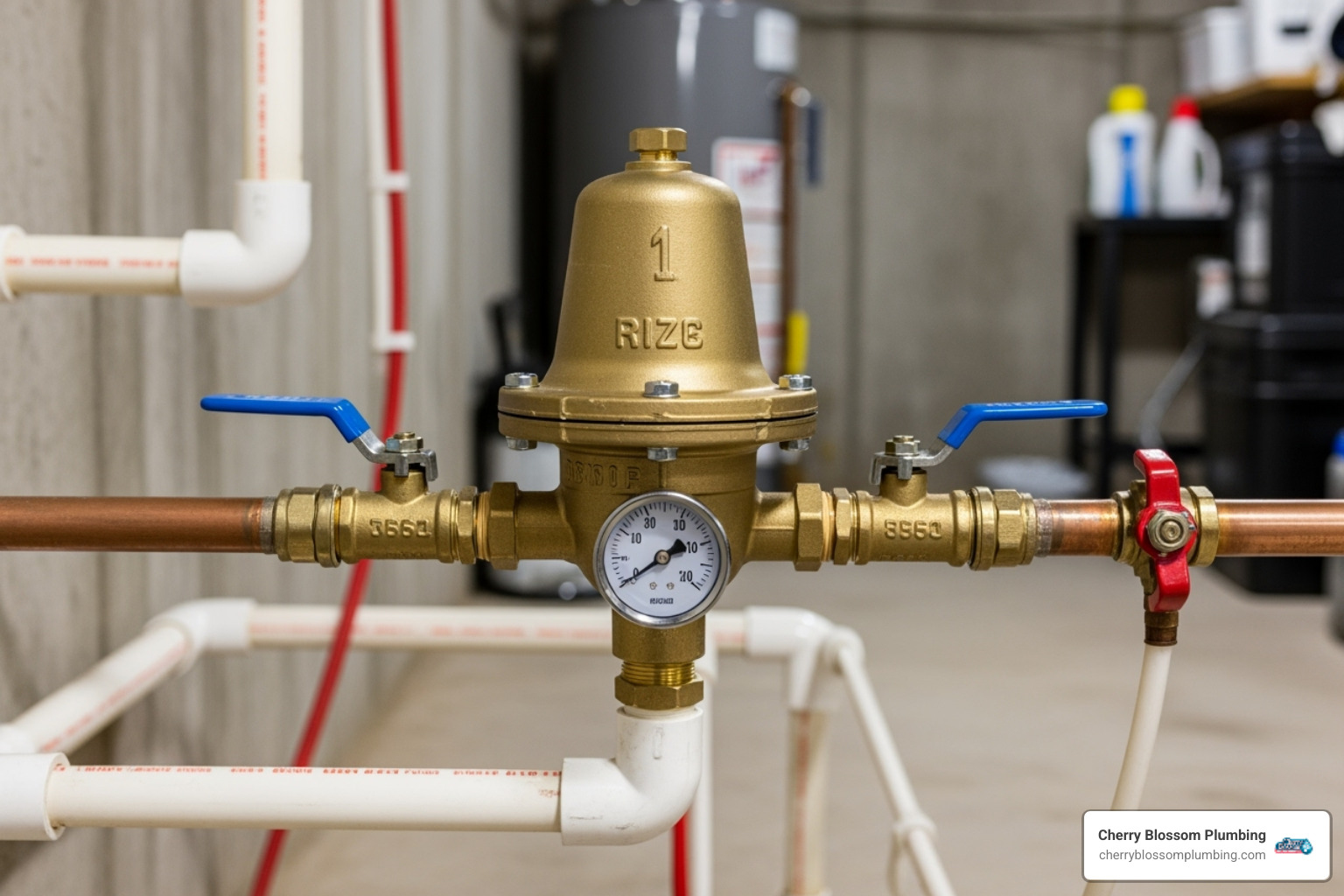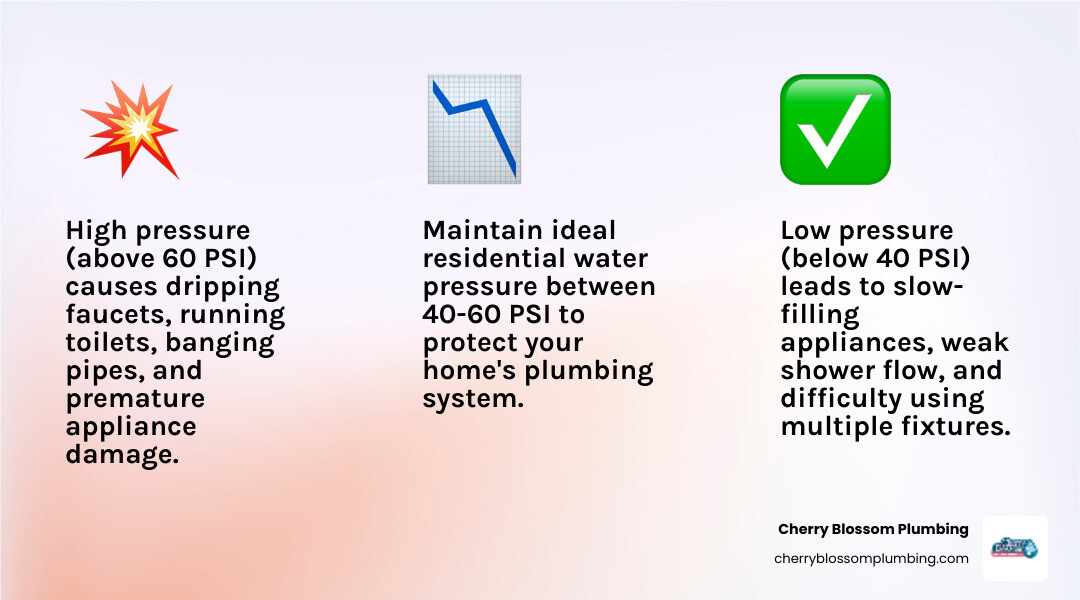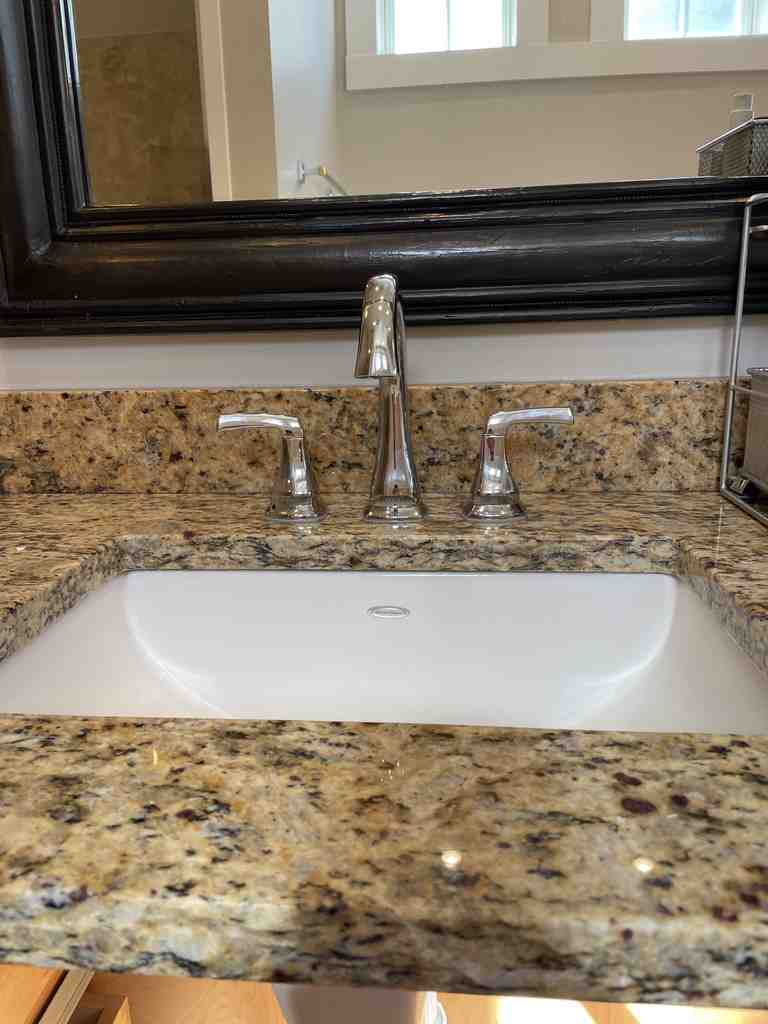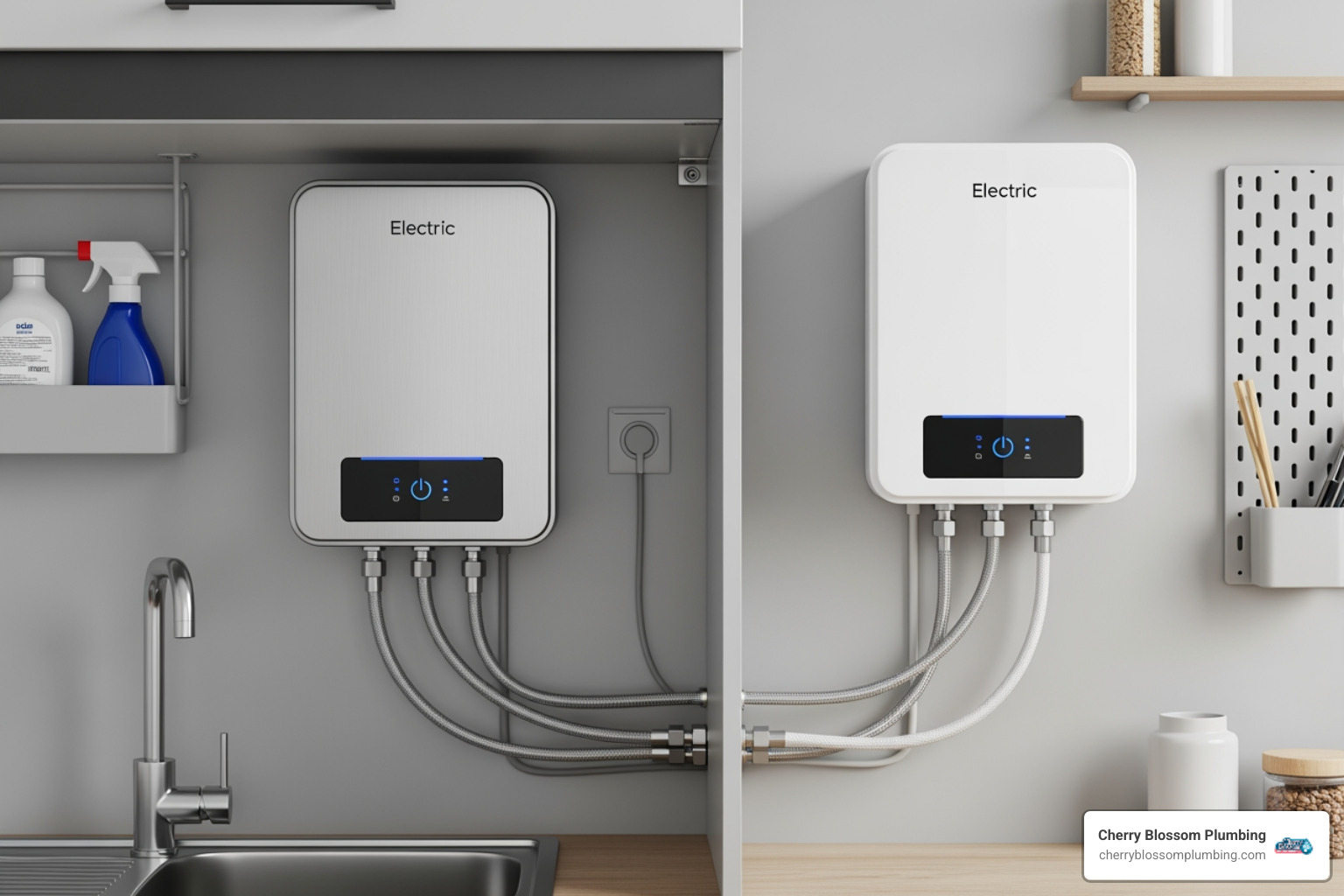
What Is a Water Pressure Regulator and Why Does It Matter?
Water pressure regulator repair is a key maintenance task that protects your home from plumbing damage. A failing regulator can cause fluctuating pressure, banging pipes, or leaky fixtures, signaling that your system needs attention.
Quick Answer: Can You Repair a Water Pressure Regulator?
Yes, many issues can be fixed with a repair instead of a full replacement.
- Common repairable issues: Worn gaskets, clogged screens, broken springs, or debris buildup.
- When to repair: If the unit is relatively new and damage is limited to internal parts.
- When to replace: If the regulator is over 10-15 years old, is heavily corroded, or pressure issues persist after adjustment.
- DIY feasibility: Moderate, requiring basic plumbing skills and tools.
What Does a Water Pressure Regulator Do?
A water pressure regulator, or pressure reducing valve (PRV), is a brass valve on your main water line. It reduces high pressure from the municipal supply (often over 150 PSI) to a safe level for your home, typically 40-60 PSI.
Without a working regulator, high pressure can damage pipes, fixtures, and appliances, leading to leaks and costly failures. Most regulators last 10-15 years before needing service.
Why Regulators Fail
Common failure points include worn rubber gaskets, broken springs, sediment buildup, or a damaged diaphragm. Constant pressure and movement cause these internal parts to wear out, preventing the valve from closing properly and leading to unsafe pressure levels. As the owner of Cherry Blossom Plumbing, I've seen how essential water pressure regulator repair is for maintaining a healthy plumbing system.

Is Your Regulator Failing? Common Warning Signs
When your water pressure regulator fails, your home will send clear signals. Paying attention to these signs can help you address the problem before it causes major damage.
The best way to check your pressure is with a water pressure gauge. Attach it to an outdoor hose spigot and turn on the water. The reading should be between 40-60 PSI for safe and efficient operation.

Here are common warning signs of a failing regulator:
- Fluctuating pressure: Water flow that bounces between strong and weak, especially when multiple faucets are running.
- Unusually high pressure: Gauge readings consistently above 60 PSI indicate the regulator is stuck open, putting stress on your entire plumbing system.
- Low water flow: If your gauge reads below 40 PSI and showers are weak throughout the house, the regulator may be stuck partially closed. For more on this, see our water pressure problems arlington va guide.
- Water hammer: Loud banging or rattling sounds in your pipes when you turn off a faucet. This means the regulator isn't absorbing pressure surges correctly.
- Dripping faucets and running toilets: High pressure can overwhelm the seals in fixtures, causing constant drips and running toilets that waste water.
- Premature appliance failure: Dishwashers, washing machines, and water heaters can fail early due to the strain of high pressure.
- Leaks from the regulator: Visible dripping or seepage around the unit itself is a clear sign of failed seals or a cracked housing that requires immediate water pressure regulator repair or replacement.
Catching these signs early allows you to fix the problem before it leads to burst pipes or ruined appliances.
A Homeowner's Guide to Water Pressure Regulator Repair
If you've identified your regulator as the problem, a water pressure regulator repair is often a manageable DIY project. Understanding the internal components is the key to a successful fix. Most regulators use a spring and diaphragm system, and over time, these parts wear out.
Common Failure Points
- Worn Gaskets and O-Rings: These rubber seals crack and become brittle, causing leaks.
- Broken or Weakened Spring: The spring balances water pressure; if it fails, the regulator can't adjust properly.
- Sediment Buildup: Debris and mineral scale can clog filter screens or prevent the valve seat from closing completely.
- Damaged Diaphragm: A tear in this flexible membrane prevents the regulator from sensing pressure changes correctly.
- Corroded Valve Seat: Imperfections on the valve seat prevent a tight seal, leading to pressure creep or leaks.

Essential Tools and Parts for Water Pressure Regulator Repair
Gather these items before you begin:
- Safety Gear: Gloves and eye protection.
- Tools: Adjustable or pipe wrenches, channel-lock pliers, screwdrivers, a bucket, and rags.
- Testing: A water pressure gauge for diagnosis and final adjustment.
- Cleaning: A wire brush, rags, and white vinegar for mineral deposits.
- Parts: A manufacturer's repair kit or individual replacement gaskets and O-rings. Also, have silicone lubricant and Teflon tape on hand.
Step-by-Step: Disassembly, Cleaning, and Inspection
For a visual guide, consider this guide to rebuilding a regulator valve.
- Shut Off Water: Turn off your home's main water shut-off valve completely.
- Relieve Pressure: Open faucets at the highest and lowest points of your home to drain the pipes.
- Disconnect Regulator: Place a bucket underneath and use wrenches to loosen the couplings and remove the regulator.
- Disassemble: Loosen the top adjustment screw to release spring tension, then remove the bell housing. Carefully lay out the internal parts (spring, diaphragm, plunger) in order, taking a photo for reference.
- Inspect: Examine each part for wear. Check gaskets and O-rings for cracks, the spring for breaks, and the diaphragm for tears. Inspect the valve seat for corrosion or mineral buildup.
- Clean: Scrub all metal parts. Use a rag soaked in white vinegar to clean the valve seat. You can gently polish minor imperfections on the seat with fine-grit sandpaper.
- Flush: Briefly turn the main water supply on and off to flush debris from the valve body.
Reassembly, Testing, and Adjusting After Your Water Pressure Regulator Repair
- Reassemble: Lubricate new O-rings and gaskets with silicone lubricant. Reinstall the internal parts in reverse order. Secure the bell housing, being careful not to overtighten.
- Reinstall: Place the regulator back in the water line, using Teflon tape on threaded connections. Tighten the couplings securely.
- Test for Leaks: Slowly turn the main water back on. Watch closely for any drips. If you see a leak, turn the water off and tighten the connection. Our pipe leak repair detection prevention solution guide has more tips.
- Adjust Pressure: Attach your pressure gauge. Turn the adjustment screw on top of the regulator (clockwise to increase, counter-clockwise to decrease) in small increments until the pressure is between 40-60 PSI.
- Lock It In: Once the pressure is stable, tighten the locknut on the adjustment screw.
Completing a water pressure regulator repair is a rewarding task that protects your entire plumbing system.
Repair vs. Replace: Making the Right Call
After inspecting your regulator, you face a key decision: proceed with the water pressure regulator repair or replace the entire unit? While repair can be a great option, replacement is sometimes the smarter long-term investment.
Age of the Regulator
If your unit is less than 10 years old and has a simple failure like a worn gasket, a repair is usually best. However, if the regulator is over 10-15 years old, it's nearing the end of its expected lifespan. Replacing it may be more sensible than fixing one part, only to have another fail soon after.
Extent of the Damage
Repair is viable if you're only dealing with worn rubber components in an otherwise good brass body. But if you find extensive corrosion, deep pitting, or cracks in the housing or valve seat, replacement is necessary. These structural issues cannot be reliably repaired and will lead to persistent leaks.
The DIY Dilemma
While a straightforward repair is achievable for many DIYers, working on your main water line carries risks. Incorrect assembly can cause leaks, and over-tightening can damage the unit. A slow, hidden leak from an improper repair can lead to significant water damage, as detailed in our guide on hidden water leaks in alexandria. If you're uncomfortable with the process, calling a professional is the safest choice.
When Adjustments Fail
If you've already tried adjusting the regulator or performing a minor repair and still experience pressure problems, it's a sign of internal failure. At this point, the unit has reached the end of its functional life and should be replaced.
| Scenario | Repair or Replace? | Why |
|---|---|---|
| Less than 10 years old | Repair | The unit's core components likely have significant life left. |
| 10-15+ years old | Replace | Near or past its expected lifespan; other parts may fail soon. |
| Simple worn parts | Repair | Gaskets, O-rings, and springs are designed to be replaced. |
| Extensive corrosion or cracks | Replace | Structural damage can't be reliably fixed and causes persistent issues. |
| Confident DIYer with right tools | Repair | A straightforward component swap is an achievable task. |
| Uncomfortable or complex model | Replace | The risk of causing further damage or leaks isn't worth it. |
| Persistent issues after adjustment | Replace | Indicates a fundamental internal failure beyond simple repair. |
The Peace of Mind Factor
A new regulator provides peace of mind, typically offering 10-15 years of reliable service. For many homeowners, this confidence is worth the investment. If you're unsure, our licensed plumbers at Cherry Blossom Plumbing can help you make the right call for your home. For professional guidance, explore our plumbing service arlington va page.
Frequently Asked Questions about Water Pressure Regulators
Here are answers to some common questions we hear from homeowners in Northern Virginia about their water pressure regulators.
What causes a water pressure regulator to fail?
The most common reasons for failure are age and wear. Internal rubber parts like gaskets and diaphragms become brittle and crack over time. Sediment and mineral scale from the water supply can also clog the valve or prevent it from sealing properly. Finally, the internal spring can break or weaken, preventing the regulator from balancing pressure correctly. These issues often lead to the need for water pressure regulator repair.
How often should a water pressure regulator be inspected?
We recommend checking your home's water pressure with a gauge at least once a year. This simple test can alert you to problems early. A professional inspection every five years is also a good idea. Since most regulators last 10-15 years, it's wise to consider a replacement around that time as a preventive measure.
Can I adjust my water pressure regulator myself?
Yes, adjusting your regulator is a straightforward DIY task. Most units have an adjustment screw on top. Turn the screw clockwise to increase pressure or counter-clockwise to decrease it. Make small, quarter-turn adjustments and check the pressure with a gauge until you reach the ideal 40-60 PSI range, then tighten the locknut.
Important: If turning the screw has no effect on the pressure, the regulator is faulty and needs repair or replacement. A working unit should respond to adjustments. For a visual guide, you can Learn how to adjust your regulator. If you're facing a faulty unit, you'll need to decide between a DIY water pressure regulator repair and calling a professional.
Conclusion: Keep Your Home's Plumbing Safe and Efficient
Your water pressure regulator is a hardworking component that protects your entire plumbing system from the damaging effects of high pressure. When it fails, you'll notice issues like banging pipes, dripping faucets, or even appliance failure. Fortunately, many of these problems can be solved with a water pressure regulator repair.
This guide has provided the steps to identify a failing regulator and perform a repair. While DIY maintenance can be rewarding, it's crucial to know your limits. If a regulator is heavily corroded, if you're uncertain about the process, or if a repair doesn't solve the problem, it's time to call a professional. Safety should always be the top priority.
At Cherry Blossom Plumbing, our licensed plumbers serve homeowners throughout Arlington, Falls Church, Alexandria, and the wider Northern Virginia area. As a family-owned business, we are committed to keeping your home's plumbing safe and efficient. Our "WOW factor" guarantee ensures we won't be satisfied until you are.
Whether you need help with a water pressure regulator repair, an inspection, or a full replacement, we are here to help. Don't wait for a small pressure issue to become a major problem. Learn more about our comprehensive plumbing service arlington va and let us ensure your home's water flows exactly as it should.
Customer Testimonials
Cherry Blossom Plumbing has consistently provided top-notch service, ensuring every issue is resolved efficiently and professionally.







